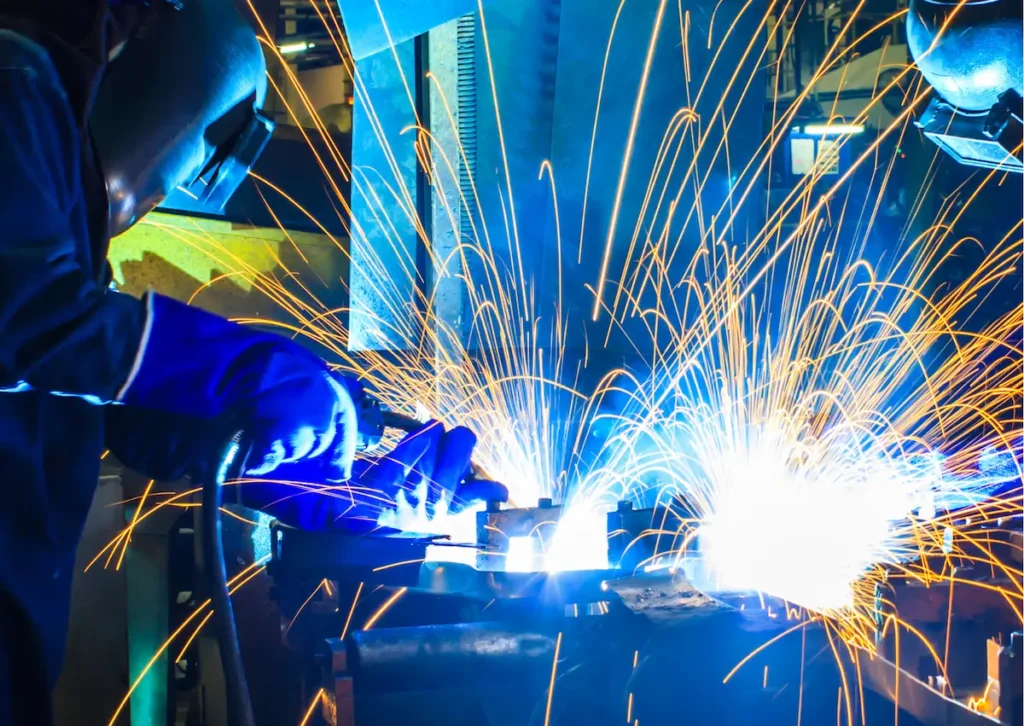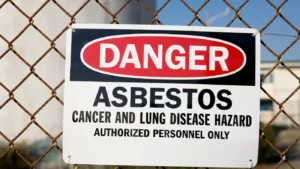Welding is essential across many industries, but it also presents significant risks. One of the most serious hazards is exposure to welding fumes, which can harm respiratory health over time. Employers must understand these risks and implement effective health surveillance to protect their workforce.
Why Welding Fumes are a Concern
Welding fumes are a complex mixture of fine particles and gases produced during welding and related processes such as cutting or soldering. They typically contain:
- Metal oxides (iron, manganese, nickel, chromium)
- Gases such as ozone, carbon monoxide, and nitrogen oxides
- Particulates small enough to penetrate deep into the lungs
The composition of fumes depends on the materials being welded, the process used, and the environment in which work takes place.
Exposure can occur in almost any industry where welding is performed. This is particularly relevant to construction, shipbuilding, manufacturing, fabrication, and mining. Both acute and chronic exposures present risks:
- Acute exposure can cause irritation of the eyes, nose, and throat, and may lead to “metal fume fever,” a temporary flu-like illness.
- Chronic exposure can result in long-term respiratory conditions, including lung damage and increased risk of cancer.
Safe Work Australia recognises welding fumes as carcinogenic to humans. This means even low-level, repeated exposure can accumulate and lead to significant health outcomes if not properly controlled.
Welding Fume Health Effects
The health effects of welding fumes vary depending on the level and duration of exposure.
Short-term risks include:
- Welding fume sickness (metal fume fever)
- Headaches, dizziness, and nausea
- Respiratory irritation, coughing, and tightness in the chest
- Eye and skin irritation
Long-term risks include:
- Chronic bronchitis and decreased lung function
- Asthma-like symptoms from sensitisation to certain metals
- Cardiovascular strain from chronic low-level exposure
- Increased risk of lung cancer and other cancers
The question is often asked: “Can welding fumes cause cancer?” The answer is yes. The International Agency for Research on Cancer (IARC) and the World Health Organization (WHO) have classified all welding fumes as Group 1 carcinogens, meaning there is sufficient evidence they cause cancer in humans.
Safe Work Australia sets workplace exposure standards to limit the concentration of hazardous substances in the air. However, welding fumes are complex, and exposures can be difficult to measure and control. This makes proactive risk management and health surveillance even more important.
It is also important to note that these WES will be replaced by Workplace Exposure Limits (WELs) by the end of 2026. Employers and PCBUs should begin preparing now, as some of the new WELs are lower than the current standards, meaning welding fume exposures will need to be managed more tightly. Safe Work Australia outlines these upcoming changes here.
Regulations & Exposure Standards in Australia
Employers have a legal responsibility under the Work Health and Safety (WHS) Act to provide a safe working environment. For welding operations, this includes managing exposure to fumes through engineering controls, administrative measures, and personal protective equipment (PPE).
Welding fume regulations in Australia reference the workplace exposure standards published by Safe Work Australia. These standards specify allowable concentrations of certain hazardous components of welding fumes, such as respirable crystalline silica, lead, and manganese. With the transition to WELs, employers will need to review all hazardous exposures across their operations and adjust controls to remain compliant.
An effective welding fume risk assessment should consider:
- The materials being welded and their coatings
- The welding process and frequency of work
- Ventilation and extraction systems in place
- The adequacy of PPE, including respirators
- The potential for vulnerable worker groups to be at higher risk
Practical safety measures include:
- Using local exhaust ventilation or fume extraction systems
- Substituting less hazardous materials or processes where possible
- Rotating workers to reduce exposure times
- Providing appropriate respiratory protection and training
Ultimately, compliance with welding fume safety regulations requires a combination of hazard control and worker health surveillance.
Role of Health Surveillance in Protecting Workers
Engineering and administrative controls are important, but they do not eliminate all risk. That’s why respiratory health surveillance plays a vital role in protecting workers exposed to welding fumes.
Health surveillance helps to:
- Detect early signs of occupational respiratory disease before symptoms become severe
- Provide a baseline for comparison over time
- Identify trends across a workforce that may indicate inadequate exposure controls
- Guide adjustments to workplace risk management strategies
For welders, health surveillance programs often include:
- Baseline and periodic lung function testing (spirometry)
- Medical history and symptom questionnaires focused on respiratory health
- Physical examinations targeted at detecting early respiratory changes
- Referral for further testing if abnormal results are identified
Health surveillance should also be integrated with occupational hygiene monitoring (such as air sampling) to provide a complete picture of workplace exposure risks.
Phoenix Occupational Medicine designs and delivers tailored health surveillance programs, ensuring compliance with WHS requirements and providing specialist oversight from Occupational and Environmental Physicians.
Learn more about our approach to health surveillance.
How Phoenix Occupational Medicine Can Help
Phoenix Occupational Medicine partners with employers across construction, mining, fabrication, and heavy industry to address the dangers of welding fumes. Our services include:
- Specialist-led programs overseen by Occupational and Environmental Physicians
- Integration of respiratory health surveillance with workplace risk assessments
- On-site and telemedicine assessments to suit operational needs
- Guidance on meeting regulatory obligations and improving worker safety
If your business involves welding operations, protecting workers from welding fume exposure is both a compliance requirement and a moral responsibility.
Contact us today to arrange a welding fume health surveillance program tailored to your workforce.
For more information on workplace substances and other exposure risks, visit our article on workplace hazardous substances.
Information provided is general only and should not be construed as legal or medical advice. We recommend that readers seek advice for their specific circumstances.




